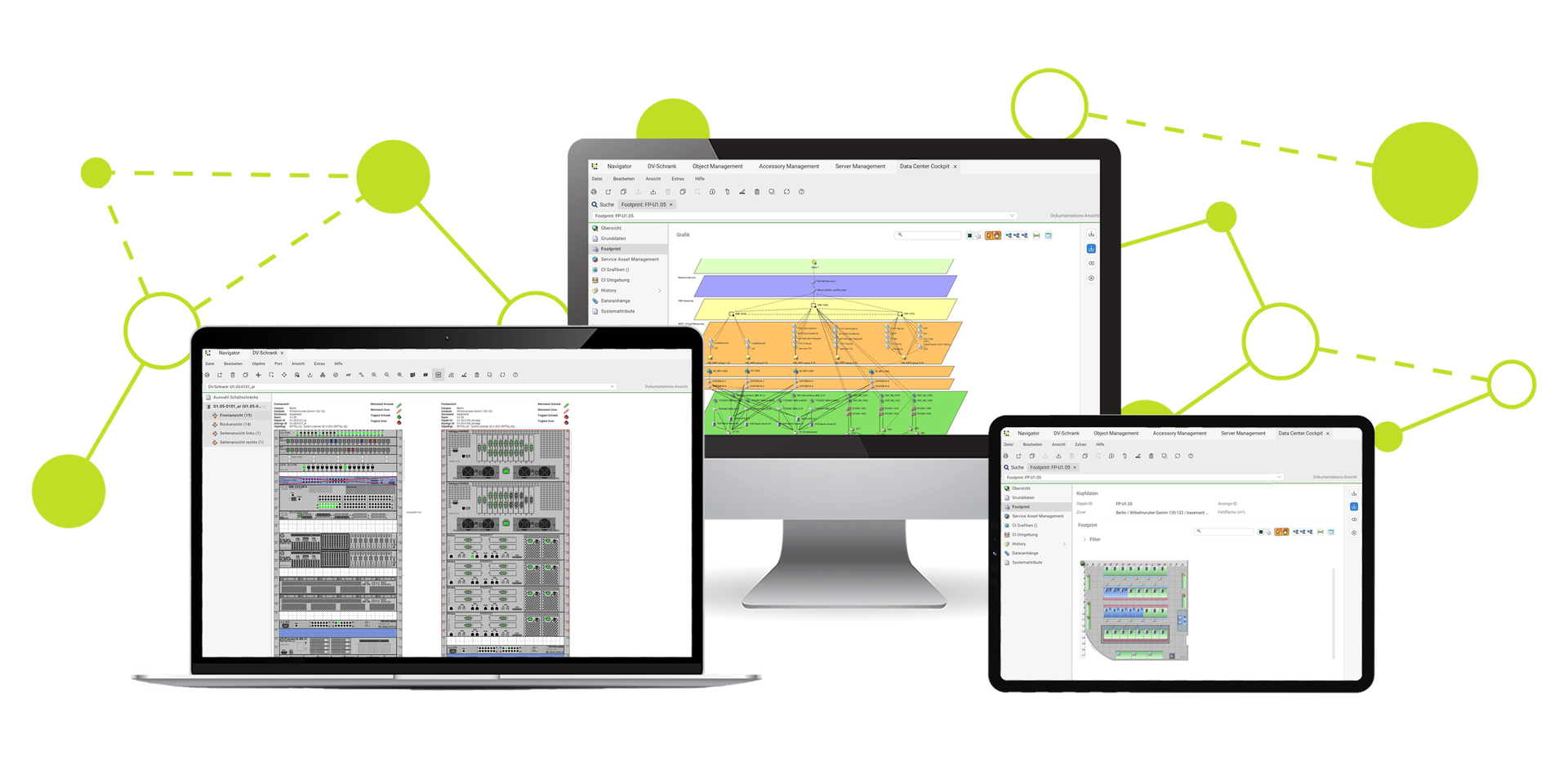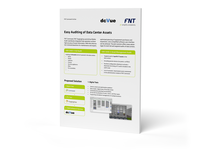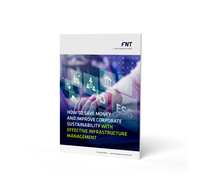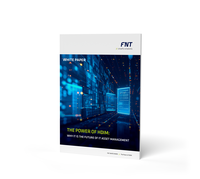IT assets have a finite period of use, and to get the most value from them, they must be actively managed. This can be achieved with the IT asset management software from FNT. It provides a complete overview of all assets and supports the management and planning of both physical devices and intangible components.
Highlights of FNT´s IT Asset Management Software
With FNT's IT asset management software, you can manage your IT assets throughout their entire lifecycle – from procurement to decommissioning. IT assets include not only all physical devices in the IT infrastructure, but also intangible components such as software instances, software licenses or virtualized functions.
The IT asset management solution is based on complete documentation of all assets and their relationships and dependencies. Features such as comprehensive contract management, powerful planning functionality and efficient work order management support you in actively managing the asset lifecycle. This allows you to easily automate processes for managing your IT assets, reduce total cost of ownership and maximize the benefits of using each asset.

Advantages of FNT’s IT Asset Management Software
Get a comprehensive overview of the lifecycle of all IT assets in your IT infrastructure. Use the new level of transparency to make better, more informed decisions on the use and procurement of assets and their respective technologies.
Centralize and standardize IT asset management in a single software. The automation of many manual processes saves time and increases efficiency. However, processes that cannot be automated benefit from a database that is always complete and correct. This significantly reduces the process costs of lifecycle management.
By effectively managing your assets throughout their entire lifecycle, you can make better use of the capacity of your IT assets and ensure more efficient use of resources.
Would you like to use the FNT - IT Asset Management Software
.
FAQ: IT Asset Management
IT asset management (ITAM) is a concept for actively managing the valuable components of the IT infrastructure landscape (i.e. the IT assets) throughout its entire life cycle. This asset management begins during the procurement phase and continues through production, use and maintenance to decommissioning at the end of the life cycle. The basis for this is the complete documentation of all assets.
IT assets can be both physical equipment (racks/IT cabinets, servers, active and passive network devices, end devices for workstation equipment) and intangible components (software instances, software licenses, virtualized functions).
The sheer volume of IT assets requires systematic management of increasingly complex and diversified IT asset landscapes. They also make IT asset management a strategic success factor and necessary to minimize risk.
IT asset management plays an important role in IT infrastructure management. This is because it ensures that an organization's assets are documented, provisioned, maintained, updated and ultimately decommissioned. The main purpose of IT asset management is to consistently optimize the ROI of investments in IT infrastructure and to maximize the benefits of each asset. Optimization and maximization occur from consistent reduction of the total cost of ownership. IT asset management supports this by enabling:
- Better, more informed technology decisions
- Needs-based software licensing Optimization of the life cycle of resources
- Reduced lifecycle management process costs
- Risk minimization, for example by identifying outdated software
- Better cost planning
Further Downloads
Would you like to know more about IT Asset Management Software? Then you might be interested in the following:







